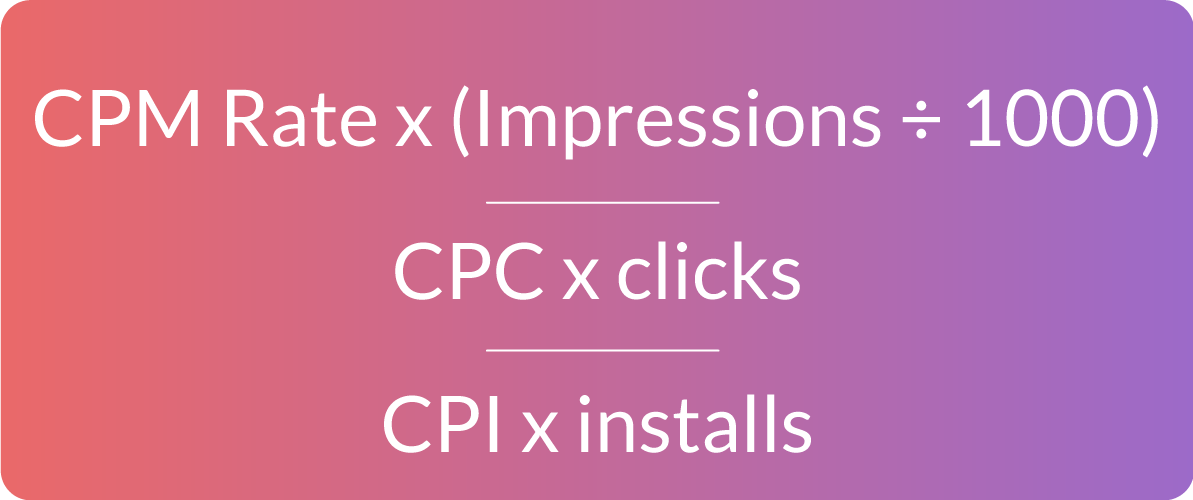Subscribe to our newsletter and get the latest resources sent to your inbox.

How to Run a Proper CPA Campaign
9 MIN READFor mobile app marketers, achieving campaign goals often requires them to look beyond the install to cost-per-action (CPA). By focusing on CPA, performance marketers can ensure their budgets will go toward finding quality users who take very specific, desired actions. That’s especially important when budgets are tight, and marketers are risk averse. However, as we explored in a recent blog post, CPA has its own risks and challenges. So, today, we’re learning how to optimize and run a good CPA campaign.
There’s more to it than you might think. So, let’s get started.
Bringing CPA campaigns to alternative bid channels
One of the main challenges of CPA campaigns is that few mobile advertising channels are priced on a CPA basis. However, that doesn’t have to be a barrier to success. Even channels priced on a cost-per-install (CPI), cost-per-mille (CPM), or cost-per-click (CPC) basis can be an effective way to achieve CPA targets.
With CPI campaigns, advertisers pay only when a user installs their app after clicking on an ad, which means that the cost is directly tied to the number of installs they receive. With CPM campaigns it’s all about impressions, and CPC campaigns have advertisers paying for clicks — whether they ultimately result in a download or another action or not. Additionally, alternative bid campaigns can help advertisers target specific audiences based on demographics, interests, behaviors, and other relevant factors, which can help to improve conversion rates.
However, these campaign types also come with risks like ad fraud. Ad fraud occurs when fraudulent actors, typically publishers or ad networks, create fake clicks on ads in order to artificially inflate their attributed installs. Fraudulent installs can result in wasted ad spend and skewed campaign results. To mitigate the risk of ad fraud, it’s important to work with direct inventory sources or partners that have fraud detection and prevention measures in place that monitor campaign performance for signs of fraud. But let’s get back to CPA…
De-risking CPA campaigns
Right about now, you might be scratching your head, wondering how these alternative bid campaigns can be used to achieve CPA goals.
That’s where we come in!
Through FeedMob media buying, our agency takes on the financial risk of buying ad inventory on a CPM, CPC, or CPI basis and only charges the advertiser on a CPA basis. This means that the advertiser only pays when a specific action is taken, such as a purchase or registration. Ultimately, this reduces the risk for the advertiser because they only pay when they get results — and generally leads to a higher quality user base.
However, advertisers should not always expect all partners to meet CPA targets upon campaign launch. It may take some time and optimization to reach the desired outcomes. Sometimes, a longer term perspective on CPA performance is more beneficial in order to maximize a new channel. As a result, advertisers may want to keep a channel active as long as the CPA is improving over time and the user quality is meeting or exceeding the goals.
The cost formula for the partner may be:

However, the spend formula for the advertiser is always:

The five hallmarks of a good CPA campaign
Here are five things every CPA campaign needs to include in order to be successful.

1. CPA campaigns need clear goals
Perhaps this should go without saying, but CPA campaigns (and all ad campaigns) should have clear objectives and goals aligned with the overall marketing strategy. They should also meet ROAS targets of the organization. For example, if the aim of the organization is to achieve an incremental 10% of revenue for every dollar spent, then the ROAS goal is 110%. Once this goal is in place, then you can look at the average LTV of the user or how much an average user is worth to the business. If the average user spends or is worth $55, then the CPA goal of the campaign should be 10% lower than the LTV, or about $50.

2. CPA campaigns need a targeted audience
The campaign should be targeted toward a specific audience based on demographics, interests, behaviors, and other relevant factors. This will help ensure that the campaign reaches the right people and achieves better conversion rates.

3. Compelling creative, and clear CTAs
When a campaign is focused on driving a specific down-funnel action, it’s especially important to offer something that is valuable and relevant to the target audience. This could be a free trial, a discount, a limited-time offer, or any other incentive that motivates the user to take action. The creative should also have a prominent CTA that tells the audience what action they must take to receive the offer. This could be a button, a link, a form, or any other element that makes it easy for the audience to take action.

4. Optimized app store landing page
CPA campaigns for mobile apps should lead to a store landing page that is optimized for conversion. The landing page should have a clear and relevant headline, attractive visuals, and persuasive copy with a value proposition for the user. If users are sent to a web landing page, then the page should also include easy sign-up fields.

5. Tracking and analysis
The campaign should be tracked and analyzed via an MMP or pixel for real-time feedback on performance. This is good practice for any performance campaign but is especially important when tracking down-funnel activity.
Overall, CPA campaigns can be an effective way to achieve campaign goals while keeping costs under control, but it’s important to carefully weigh the potential risks and benefits before launching a campaign. By working with reputable partners and closely monitoring campaign performance, advertisers can minimize the risk of ad fraud and achieve better results from their CPA campaigns.
Posted: May 16, 2023
Category: Mobile Insights Blog, Mobile Performance Strategies
Tags:

